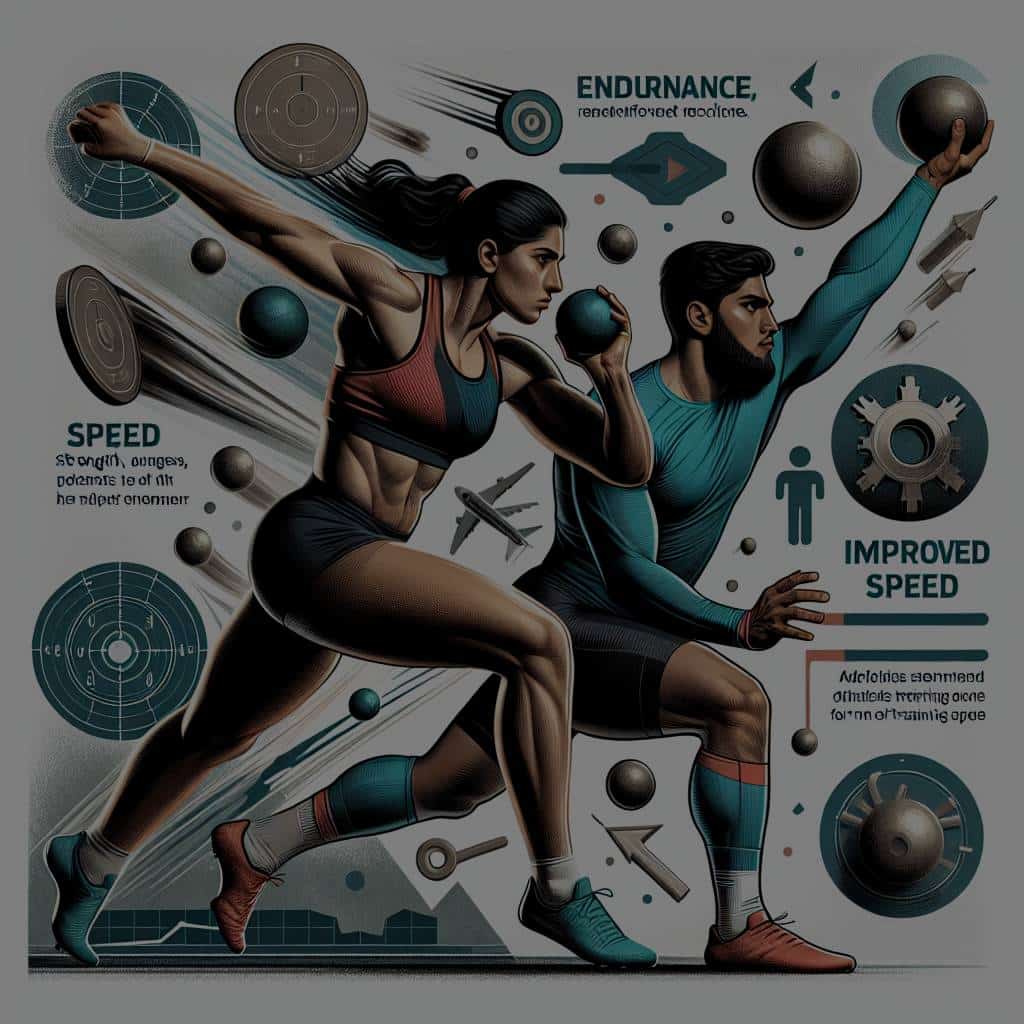What Are the Advantages of Isokinetic Strength Training for Shot Put Athletes?

In an era where athletes are constantly seeking innovative ways to enhance their performance, isokinetic strength training has emerged as a potent tool. Employed by a diverse range of athletes, this training modality boasts an array of benefits. However, its application appears to be particularly advantageous for shot put athletes. Delving into various scholarly resources, including Google Scholar, PubMed, and CrossRef, we will explore the compelling advantages of isokinetic strength training for shot put athletes. Notably, we’ll unearth how this training influences aspects like strength, power, speed, and muscle performance.
The Concept of Isokinetic Exercises
Before considering the benefits of isokinetic strength training for shot put athletes, it’s essential to understand what these exercises entail. Isokinetic exercises are a type of resistance training that maintains a constant speed throughout the movement while the muscle exerts maximum force. This ensures that the muscle is worked throughout the entire range of motion, providing a comprehensive and effective workout.
Additional reading : How to Structure a Flexibility and Mobility Program for Competitive Cheerleaders?
Isokinetic exercises require specialized equipment that can adjust the resistance in response to the user’s force output. This creates a scenario where the exercise’s velocity remains constant regardless of how much force the athlete applies. Consequently, these exercises can target and develop specific muscle groups more effectively than other forms of training, which is especially beneficial for shot put athletes who rely heavily on certain muscles for performance.
Improved Strength and Power
Strength and power are two critical factors for shot put athletes. The act of throwing a heavy object requires a significant amount of force, which is directly related to an athlete’s strength and power levels. Therefore, shot put athletes often focus on these two aspects in their training.
Also to discover : What Are the Best Strategies for Teaching Effective Communication Skills in Doubles Tennis?
According to various studies indexed in Google Scholar, isokinetic strength training has been shown to significantly enhance both strength and power in athletes. The constant speed and maximum force exerted during isokinetic exercises lead to an increased rate of muscle fiber recruitment. This, in turn, contributes to strength gains and power enhancement. Thus, incorporating isokinetic strength training into their regimen can help shot put athletes boost their throwing prowess.
Muscle Performance and Resilience
Another advantage of isokinetic strength training is the improved muscle performance it fosters. By maintaining a constant speed and maximizing force production throughout the entire range of motion, isokinetic exercises stimulate a higher degree of muscle contraction in targeted muscle groups. This can lead to increased muscle endurance, coordination, and proprioception—factors that are essential for shot put athletes.
Moreover, PubMed-indexed research indicates that isokinetic strength training can also contribute to muscle resilience. Specifically, these exercises can promote muscle hypertrophy and bolster muscle tissue’s ability to resist damage. This can be particularly beneficial for shot put athletes, as their sport involves repetitive high-intensity actions that can strain muscles.
Enhanced Throwing Velocity
In shot put, the velocity at which the athlete propels the shot is instrumental in determining the throw’s distance. Hence, training that can improve throwing velocity can significantly enhance a shot put athlete’s performance. Studies referenced in CrossRef corroborate this, indicating that isokinetic strength training can contribute to increased throwing velocity.
The ability of isokinetic exercises to maintain constant speed regardless of the force exerted enables athletes to work their muscles at different velocities. By adjusting the speed settings on the isokinetic machine, athletes can train their muscles to contract faster, thereby enhancing the speed at which they can throw the shot.
Tailored Training and Performance Tracking
Finally, the nature of isokinetic strength training allows for a high level of customization. The resistance provided by isokinetic machines can be adjusted to match the athlete’s force output, which allows for individualized training programs based on the athlete’s strength levels and performance goals. This is advantageous for shot put athletes, who often need to focus on training specific muscles involved in the throwing motion.
Moreover, isokinetic machines often come equipped with real-time performance tracking capabilities. This means that athletes and coaches can monitor the force, speed, and power exerted during each exercise, allowing for accurate progress tracking and the fine-tuning of training programs. This adds another layer of value to isokinetic strength training, making it a highly effective tool for shot put athletes.
Comparisons and Contrast with Other Forms of Training
Beyond the aforementioned benefits, it’s also helpful to examine how isokinetic strength training compares to other forms of training commonly used by shot put athletes, such as traditional resistance training and plyometric exercises.
According to a systematic review indexed in Google Scholar, while traditional resistance training, such as bench press, is effective in improving muscle strength, it may not optimize muscle power to the same extent that isokinetic training does. This is due to the inherent nature of isokinetic exercises that stimulate a higher rate of muscle fiber recruitment, thereby enhancing both strength and power concurrently.
Likewise, plyometric exercises, which involve explosive movements, are often used to improve power output. However, as noted in a CrossRef-indexed study, isokinetic strength training may offer superior precision in targeting specific muscle groups. This is especially advantageous for shot put athletes who need to focus on specific muscles involved in the throwing motion.
Moreover, the real-time performance tracking capabilities of isokinetic machines provide a distinct advantage over other training forms. This allows for accurate progress tracking and fine-tuning of training programs, contributing to optimized performance outcomes.
Rehabilitative and Injury Prevention Benefits
In addition to its performance-enhancing effects, isokinetic strength training also has potential rehabilitative and injury prevention benefits. A PubMed-indexed study highlights that the controlled environment provided by isokinetic exercises can be particularly beneficial in the rehabilitation phase following an injury.
Undergoing isokinetic strength training allows athletes to work on their strength cond without excessive strain on the injured area, hence promoting faster and safer recovery. Moreover, the ability of isokinetic training to bolster muscle resilience can also play a crucial role in injury prevention. By promoting muscle hypertrophy and enhancing the muscle tissue’s ability to resist damage, athletes can potentially mitigate the risk of injuries.
Conclusion
The world of athletic training is continually evolving, and isokinetic strength training represents a significant development in this realm. As evidenced by numerous studies indexed in resources like Google Scholar, PubMed, and CrossRef, this training modality offers multiple benefits to shot put athletes.
From enhanced strength and power to superior muscle performance and resilience, isokinetic strength training can significantly elevate a shot put athlete’s performance. Additionally, the ability to tailor training based on the athlete’s strength levels and goals, and track performance in real-time, adds another dimension of value to this type of training.
Moreover, its rehabilitative and injury prevention benefits further underscore isokinetic strength training’s importance in the training regimen of shot put athletes. Thus, as we continue to push the boundaries of athletic performance, isokinetic strength training is poised to play an increasingly pivotal role in shaping the future of shot put athletics.
